#Mertz Library
Explore tagged Tumblr posts
Video
n20_w1150 by Biodiversity Heritage Library Via Flickr: New rare and beautiful flowers.. Floral Park, N.Y. :The Company,. biodiversitylibrary.org/page/46385165
#Catalogs#Childs#John Lewis (Firm)#Floral Park#Flowers#New York (State)#Nurseries (Horticulture)#Nursery stock#Seed industry and trade#Seeds#Mertz Library#The New York Botanical Garden#bhl:page=46385165#dc:identifier=http://biodiversitylibrary.org/page/46385165#Melon pear#Guava cattleyi#Trifoliate orange#Pomegranate Spanish beauty#bhlGardenStories#BHLinbloom#Solanum muricatum#pepino#pepino dulce#Citrus trifoliata#pomegranate spanish ruby#pomegranate#guava cattleya#Strawberry Guava#Cattley guava#cherry guava
6 notes
·
View notes
Video
n172_w1150 by Biodiversity Heritage Library Via Flickr: Illustrierte Garten-Zeitung. bd.4 Stuttgart,E. Schweizerbart. biodiversitylibrary.org/page/6657679
#Horticulture#Periodicals#Pictorial works#Plants#Ornamental#Mertz Library#The New York Botanical Garden#bhl:page=6657679#dc:identifier=http://biodiversitylibrary.org/page/6657679#taxonomy:genus=Pelargonium#flickr
2 notes
·
View notes
Text










Botanical illustrations taken from 'The Flowering Plants, Grasses, and Ferns of Great Britain' by Anne Pratt, Edward Stepp.
Published 1905 by F. Warne.
New York Botanical Garden, LuEsther T. Mertz Library.
archive.org
238 notes
·
View notes
Text

"Queen of the Night"
Selenicereus pteranthus, known as "queen of the night" or "princess of the night" is a night-blooming cactus.
This week's HSA Sunday Garden features SciArt found in The Natural History of Plants, Vol. 1 (1894) by Anton Kerner von Marilaun, translated by F. W. Oliver with the assistance of Marian Busk and Mary F. Ewart. This particular image was printed from the original by Ernst Friedrich Heyn held by the publishing company, Bibliographisches Institut in Leipzig, Germany.
View more in Biodiversity Heritage Library with thanks to the Mertz Library of the New York Botanical Garden for digitizing.
#cactus#night blooming cactus#queen of the night#princess of the night#histsciart#sciart#naturalhistory#biodiversity heritage library#flowers#nybg#flower art#flowercore
301 notes
·
View notes
Text

Liberty Caps and Other Mushrooms, 1803
James Sowerby (1757-1852)
from Coloured Figures of English Fungi or Mushrooms
Mertz Library, New York Botanical Garden
#english imagination#english culture#albion#england#art#english art#mushrooms#english illustrator#illustration#botanical illustration#19th century artist#19th century#fungi#vintage illustration
38 notes
·
View notes
Text


The House that Publishers Clearinghouse Built. The architect firm that designed Epcot also designed a house for Harold & LuEsther Mertz, founders of Publishers Clearing House, the direct marketing company known for its sweepstakes and prize-based games. Built in 1979 in Longwood, Florida, it has 9bds, 11ba, and is offered for sale for $5.5M.
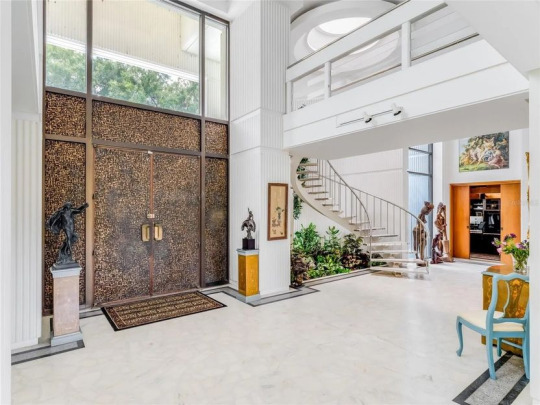
Are the stones wearing off the front door? Look at the overpass- it does kinda look like the monorail at Epcot.

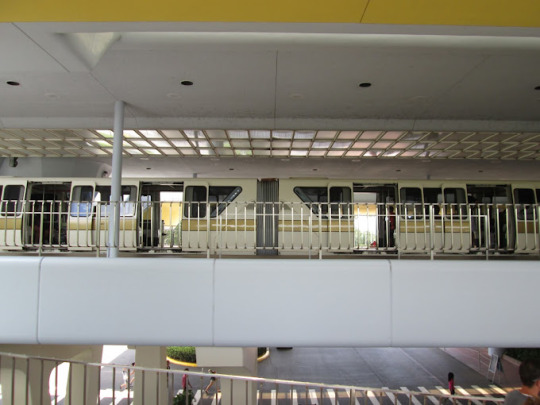
Am I right?
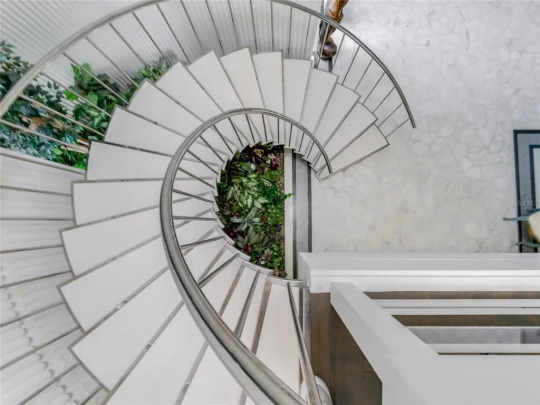
Look at the indoor garden under the stairs.

The upper level.

What's with all the dopey little statues all over the place?


The living room. I bet there's a housekeeper just for dusting all the statues.

Looking down from your monorail to the living room.


Great conservatory, but I'm guessin' the parents sat in those chairs listening to their kid practice the piano.

The dining room has some sort of multi-faceted ceiling.
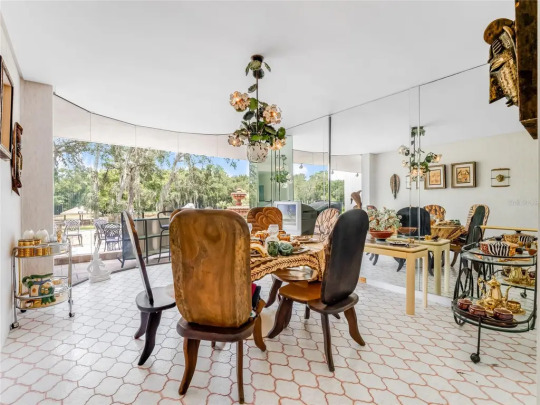
I'm getting confused by the mirrored images.


This retro kitchen stayed so clean b/c I don't think anyone ever used it. I would be afraid of getting sucked up by that exhaust hood. Beam me up, Scotty.

Family room/library/office combo has a great mezzanine.

As if the primary bedroom isn't big enough, there's an anteroom, too.

Huge primary bedroom. They can take that furniture with them.
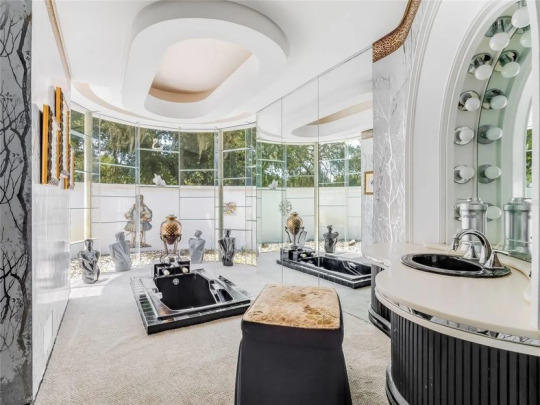
There's a lot going on in here. Sunken tub, mirrored walls, glass walls, busts enjoying the show, King Henry VIII painted on the wall outside, and a carpeted floor.

Water feature in the garden.

The pool looks a little lonely and forlorn in front of the mausoleum style guest house.
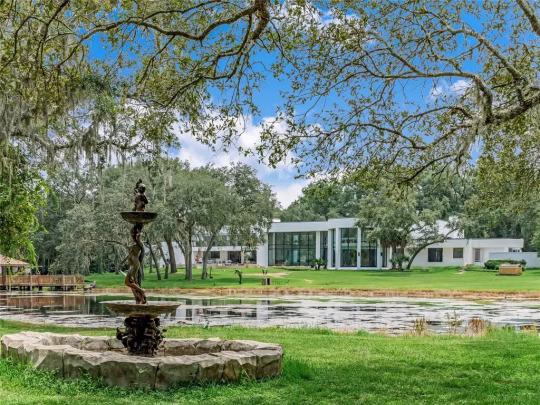
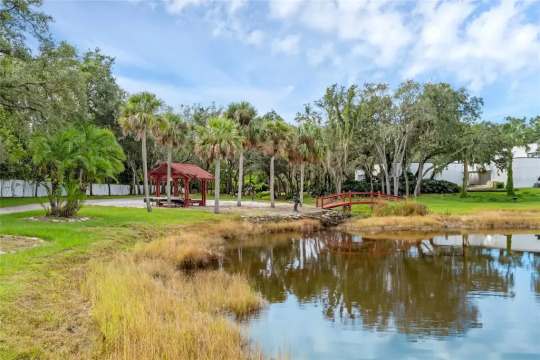
I think that this is the fish-stocked pond where you can fish off your own bridge.

Lay of the land - notice there're staff quarters in the upper right corner.
77 notes
·
View notes
Text
Herbarium you Browse… Poison you Find

Drying and preserving plants for scientific or recreational purposes is a practice that has been used for centuries. Even today, botanists and hobbyists create herbariums: collections of dried plant specimens useful for studies and research. Their long preservation is ensured by chemical compounds that prevent mold and insect damage.
In the 19th century, advances in metal fusion led to an abundance of mercury, used to produce a powerful pesticide: mercuric chloride, or corrosive sublimate. This odorless compound, mixed with alcohol or ether, was applied to already dried and pressed plants. However, there was a problem: it was highly toxic, although the health risks were poorly understood at the time.
One peculiarity of corrosive sublimate, well known to museum curators, is that over time it darkens the surrounding paper, leaving gray or black stains. The presence of these stains was often a sign of mercury contamination… or maybe not?
In 2019, a group of researchers analyzed objects from the Exsiccated Specimens Collection of the Mertz Library at the New York Botanical Garden, one of the largest botanical libraries in the world. Among the analyzed materials, the herbarium 158 Plants Collected in Little Britain Township, 1837 quickly attracted attention for its possible mercury residues, even though its stains were less noticeable than those commonly associated with corrosive sublimate.
To solve the mystery, researchers used a portable X-ray fluorescence spectrometer (XRF), a tool that analyzes the chemical composition of objects. When X-rays hit atoms, they emit energy as photons, with a unique signature that allows for precise identification. Surprisingly, no mercury was found, but instead high concentrations of arsenic trioxide! Also known as white arsenic for its opaque, glass-like appearance, arsenic trioxide was considered an ideal pesticide. In small quantities, it was extremely effective, water-soluble, and capable of preserving the colors of specimens. At the time, arsenic was easily accessible, available in shops, and even purchasable by children.
The discovery makes this herbarium a rare, if not unique, case of arsenic being used in adhesive for preservation. Today, we know that no level of arsenic exposure is safe. Therefore, handling old herbariums requires proper protection—you never know what poison you might leaf through.
See You Soon and Good Science!
source
#drops of science#news#latest news#news of the week#science#herbariums#conservation#arsenic#botany#mercury#poison#old herbariums#spectrometry#heavy metals#toxicity#protection#museums#dried plants#scientific research#chemistry#plants
3 notes
·
View notes
Text
is Pantone 327 and the closest Benjamin Moore match is Juniper. Monet’s actual paint color varies within the site (looking at photos and videos shutters appear to be a variety of greens, benches, steps, and rails are a variety of greens too) and varies through time. We chose this green by doing sample colors from painting and photo matching, as well as consulting the experts at the Monet home."




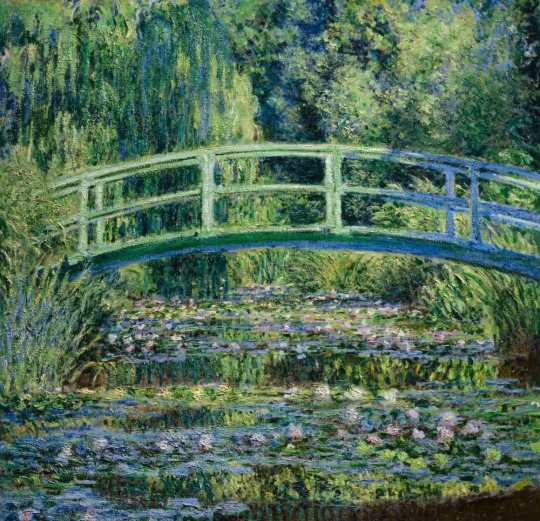
-----
They were visiting the garden in a program I was watching, and I got curious about the bridge color. Thank you, librarians! :)
2 notes
·
View notes
Text
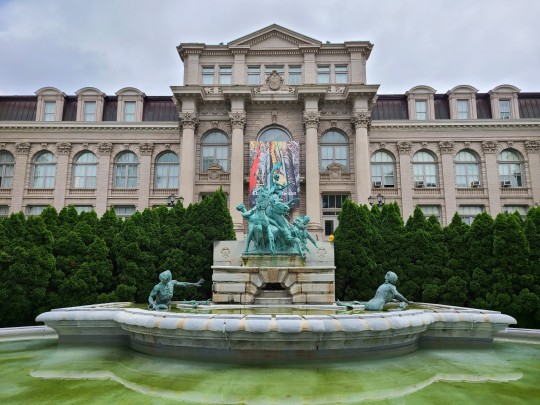
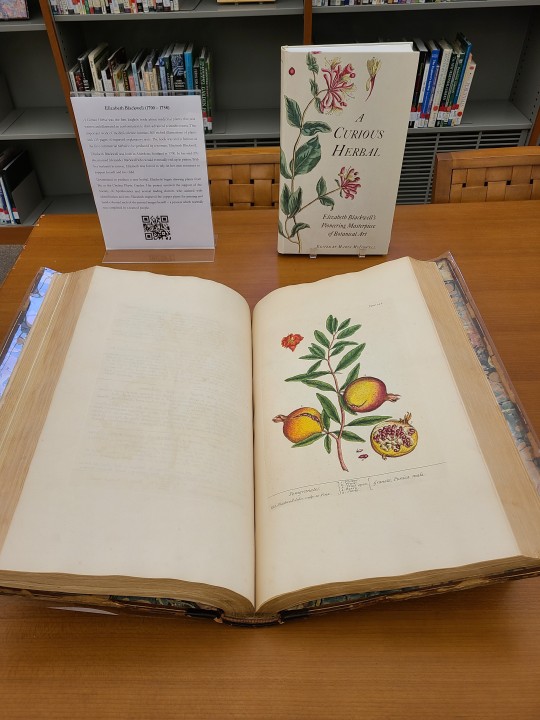

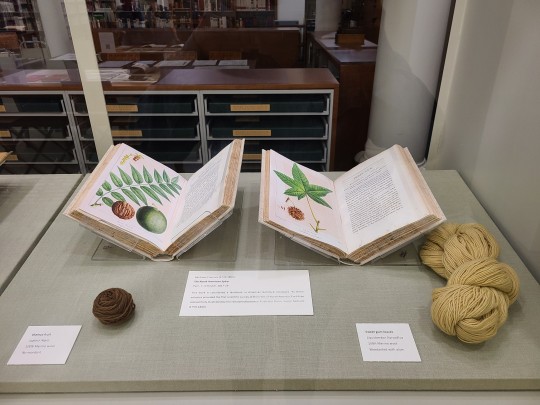
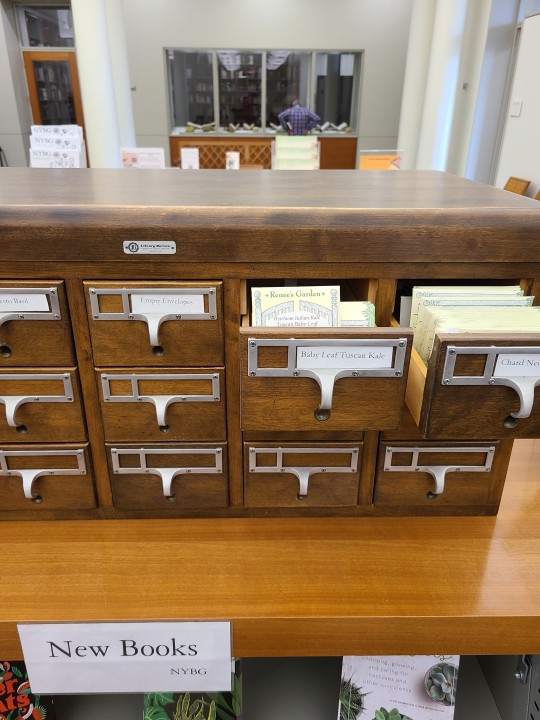

Beautiful trip today to @nybg and the LuEsther Mertz Library. I brought home some Kale seeds for fall and some empty envelopes to send them flower seeds for the seed library. And I got a library card!
There's an inspiring little community garden by the Botanic Garden train station where they have BANANA TREES!!!
3 notes
·
View notes
Text
An Anonymous Botanist has Poisoned a Herbarium in New York in an Unusual Way
An Anonymous Botanist has Poisoned a Herbarium in New York in an Unusual Way https://ift.tt/0DR9SqU Herbaria are essential tools for Botany. They’re collections of preserved plant remains that can be used for reference by other botanists, but they have a problem. Herbaria don’t just attract botanists, they can attract insects. In the nineteenth century, a popular pesticide was corrosive sublimate (mercury [II] chloride), a colourless but toxic chemical often mixed in with alcohol or ether to preserve the plants from bugs. It’s a health hazard. That’s why Catherine Stephens and colleagues were inspecting old collections of plants in the LuEsther T. Mertz Library of the New York Botanic Garden, for telltale signs of grey blotching. These stains in the paper around plants give away the presence of mercury traces in the poison. What they found when they examined the pages of “158 Plants Collected in Little Britain Township, 1837” surprised them. Stephens used a handheld X-ray fluorescence spectrometer. This is as close to a Star Trek tricorder as you could hope for. You point the spectrometer at the thing you’re interested in. The spectrometer sends a very low power beam to the target. This beam has enough energy to ‘excite’ electrons, knocking them up to higher energy levels. These electrons aren’t stable in the higher levels, so they quickly drop down to their normal state. When they do, they release the extra energy as a photon. The energy and wavelength of the photons is directly connected to the energy levels around the atoms in the sample, and each kind of atom has different energy levels. So these photons act as a chemical fingerprint for what’s in your sample. There wasn’t any mercury in this herbarium. There was a lot of arsenic. But the arsenic was not where they expected. It wasn’t the plant as such. The strongest signals for arsenic were found where the glue was thickest. It seems that the collector of these samples didn’t use the standard techniques, but instead mixed a chemical, likely arsenic trioxide, in with the glue to preserve the samples. It seems to have been effective. There’s little damage to the specimens ever after almost 200 years. But it’s an unusual method of protection. The team haven’t found any other examples of botanists poisoning their glue. The Botanist, whoever they were, wasn’t trying to poison future generations but rather to send a gift to the future, and preserve it. That meant using what they could get their hands on. Stephens and colleagues discuss the history of preservation in their article, and point out how much Americans loved to use arsenic. “For much of the nineteenth century, arsenic was an indispensable everyday commodity that could be purchased in now-astonishing quantities by anyone who desired it, even by children.” Stephens and colleagues note that XRF scanning is expensive, and it’s not an option for all institutions. But they also point out they were lucky to use it. “In the case of this 1837 bound herbarium, spot-testing might have given a false sense of security to Library staff, because the presence of mercury would have been ruled out, while the presence of arsenic might not have been suspected or explored.” They also add there is no safe degree of arsenic exposure. If you’re seeking adventure in botanical research, you might find more surprising discoveries exploring these early botanical artifacts than you will in the field – though perhaps with more unexpected hazards than you bargained for. Stephens, C.E., Miller, K.O. & Marder, O.S. (2025). ‘Dash on the Poison’: Analysis of an 1837 Bound Herbarium Laced with Colorless Arsenic Trioxide. Studies in Conservation. https://doi.org/10.1080/00393630.2024.2448101 Cross-posted to Bluesky & Mastodon. The post An Anonymous Botanist has Poisoned a Herbarium in New York in an Unusual Way appeared first on Botany One. via Botany One https://botany.one/ February 02, 2025 at 09:00AM
0 notes
Text
New York Botanical Garden, Carbon-Neutral Flight, Google Sheets, More: Saturday ResearchBuzz, February 1, 2025
NEW RESOURCES New York Botanical Garden: Updates from the Archives: Making Institutional Records More Accessible. “Thanks to a generous grant from Shelby White and the Leon Levy Foundation, the LuEsther T. Mertz Library is now able to process, digitize, and make accessible the institutional records of the New York Botanical Garden. We’re excited to announce collections that are newly processed…
0 notes
Video
n89_w1150 by Biodiversity Heritage Library Via Flickr: New rare and beautiful flowers.. Floral Park, N.Y. :The Company,. biodiversitylibrary.org/page/46385189
#Catalogs#Childs#John Lewis (Firm)#Floral Park#Flowers#New York (State)#Nurseries (Horticulture)#Nursery stock#Seed industry and trade#Seeds#Mertz Library#The New York Botanical Garden#bhl:page=46385189#dc:identifier=http://biodiversitylibrary.org/page/46385189#bhlGardenStories#BHLinbloom#dahlia#flickr#cottagecore#vintage advertising#vintage catalog#flowercore
4 notes
·
View notes
Video
n145_w1150 by Biodiversity Heritage Library Via Flickr: Prof. Dr. Thomé's Flora von Deutschland, Österreich und der Schweiz, in Wort und Bild, für Schule und Haus ; mit ... Tafeln ... von Walter Müller.. Gera-Untermhaus :F.E. Köhler,1886-1934.. biodiversitylibrary.org/page/4321288 #Pomegranate originally native 2 modern-day Iran & Iraq, but cultivated in Caucasus since ancient times biodiversitylibrary.org/page/4321288 #bhlib
#Austria#Cryptogamia#Floras#Germany#Plants#Switzerland#Mertz Library#The New York Botanical Garden#bhl:page=4321288#dc:identifier=http://biodiversitylibrary.org/page/4321288#pomegranate#taxonomy:binomial=Punica granatum#Lythraceae#Twitter Post#flickr
0 notes
Text










Botanical illustrations taken from 'Elements of the Science of Botany' by Richard Duppa.
Published 1812. Printed by T. Bensley for J. Murray.
New York Botanical Garden, LuEsther T. Mertz Library.
archive.org
144 notes
·
View notes
Text
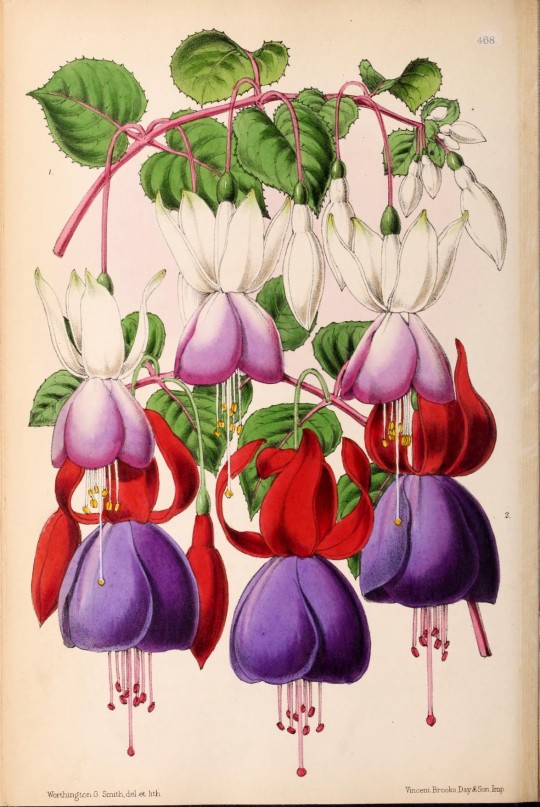
Fuchsias by Worthington G. Smith for The Floral Magazine, Vol. 9 (1870). View more in Biodiversity Heritage Library with thanks to the Mertz Library of the New York Botanical Garden for digitizing.
#fuchsias#flowercore#bhlib#histsciart#sciart#naturalhistory#biodiversity heritage library#flowers#flower aesthetic#NYBG
279 notes
·
View notes
Photo
This miniature herbarium office is part of a small exhibit of my work on display in the Mertz Library at the New York Botanical Garden right now (October 2023). If you happen to be visiting NYBG this month, check it out!

There are also tiny books.


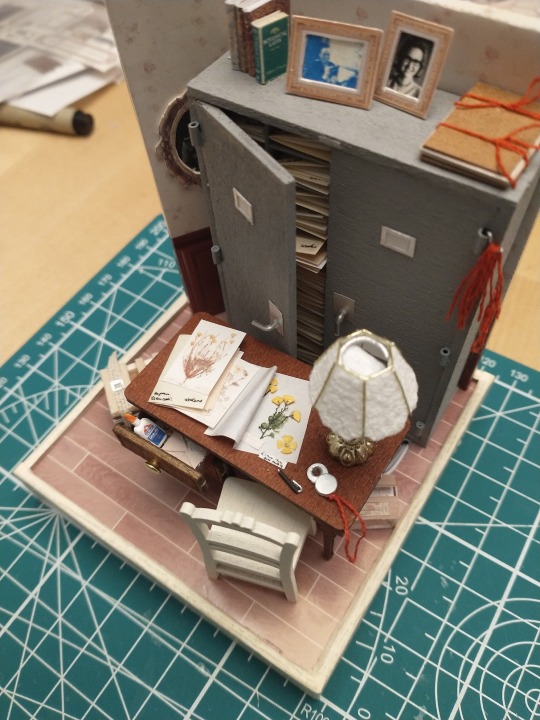

I made a miniature herbarium! Used a kit as a base, but then crafted the herbarium cabinet, plant press, and lots of specimens.
(Modified from kit: Elegant Studio)
#miniature#miniatures#tiny things#natural history collections#self promotion#exhibit#miniature books#herbarium#museum#plant specimens
45 notes
·
View notes

